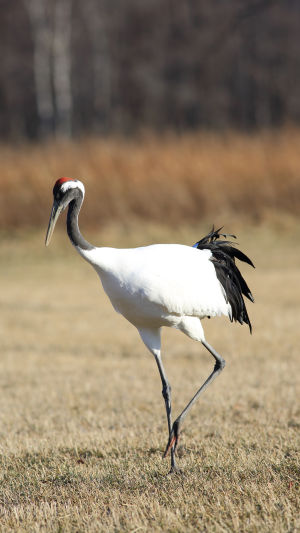The red-crowned crane is a large and beautiful bird that is native to East Asia. It is also known as the Japanese crane, Manchurian crane, or Korean crane.
It is one of the most iconic and revered birds in its range and is considered a symbol of longevity, luck, and fidelity.
Physical Characteristics:
The red-crowned crane is one of the largest crane species in the world, standing up to 5 feet tall and weighing up to 26 pounds.
It has a long, graceful neck, long legs, and a wingspan of up to 8 feet.
The plumage of the red-crowned crane is mostly white, with a red patch on the crown of the head and black feathers on the wings. The bill is long and pointed, and the legs and feet are black.
Habitat:
The red-crowned crane is found in a variety of wetland habitats, including marshes, mudflats, and rice paddies.
They live in dense vegetation such as reeds that allow them to eat and provide safe cover for their offspring.
The cranes mainly feed on insects, small fish, crabs, roots, stems, and leaves of plants.
If it is cold, the cranes will eat ice in the river. During severe winters, many cranes migrate to other areas to spend the winter.
Behavior:
Red-crowned cranes are monogamous and form long-term pair bonds. They are social birds and can be found in pairs or small groups.
During the breeding season, they perform an elaborate courtship dance that involves jumping, bowing, and calling. The female lays 1-3 eggs, which are incubated by both parents.
The chicks are born precocial, meaning they can walk and feed themselves shortly after hatching.
Conservation Status:
The red-crowned crane is listed as Endangered by the International Union for Conservation of Nature (IUCN), with a population of around 2,750 individuals. The main threats to the species are habitat loss and degradation, hunting, and disturbance.
The species is protected by law in all of its range countries, and conservation efforts are underway to protect and restore its habitat, reduce hunting, and raise awareness about the importance of the species.
The red-crowned crane is an exceptionally beautiful, unique, and rare bird.
Their characteristics and habits have created a strong interest in them and inspired more scientific research.





